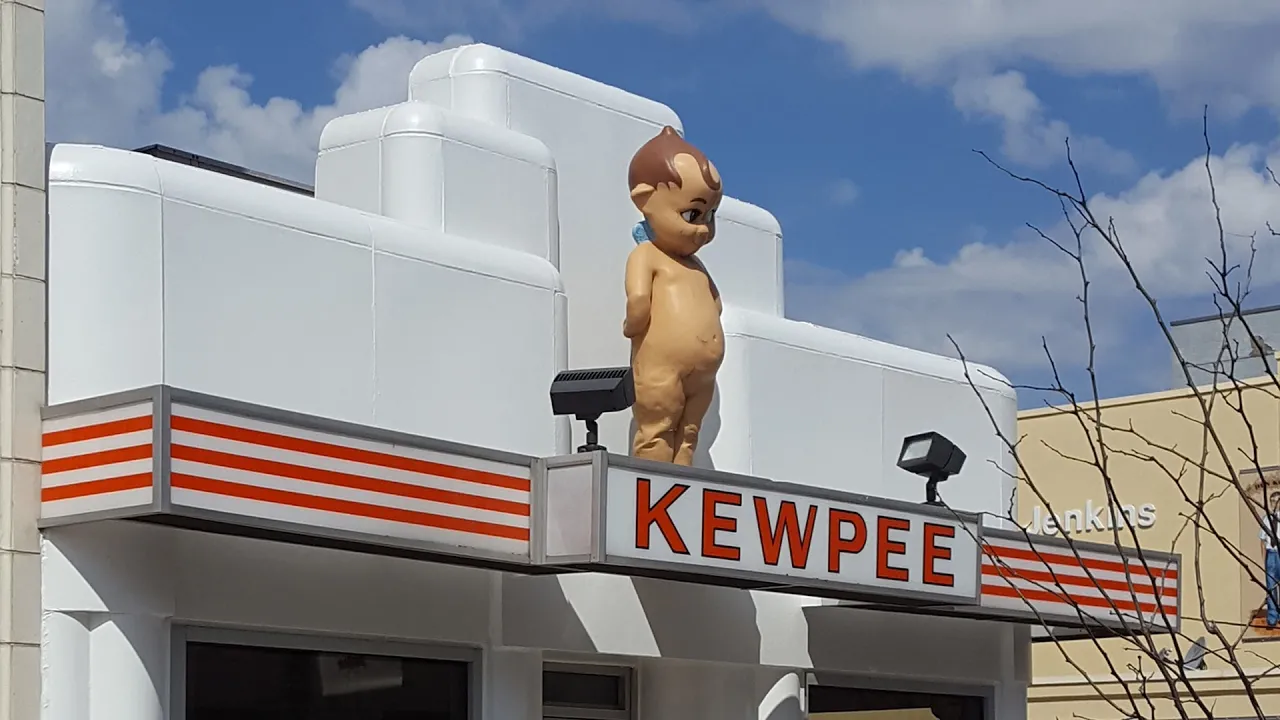Why this article? When we mistook Kewpie with Kewpee
More than a year ago we made a video ‘tribute’ to our Kewpie and for it we used material we found on youtube, the ‘borrowed’ material was only a few seconds and we thought it was some old cartoons in what Kewpie appreciates.
But they were not cartoons about Kewpie, it was a documentary of how it was made from an advert for Kewpee hamburgers. And of course we have to give an explanation, and here it is.
Introduction to Kewpee Hamburgers
In the early 1920s, Kewpee Hamburgers was born, a small but innovative fast-food chain that left an indelible mark on the American culinary landscape. Known for its signature square hamburgers and commitment to fresh, high-quality ingredients, Kewpee played a key role in shaping the fast-food industry. However, despite its initial success, the chain eventually declined, making way for fast-food giants like McDonald’s and Burger King.
If you want to know all about this fascinating story buy Gary Flinn’s book, “Kewpee Hamburgers: A Mity Nice History,” that tells the full story of one of USA’s oldest hamburger chains and try to visit one of the latest locations in the Midwest.
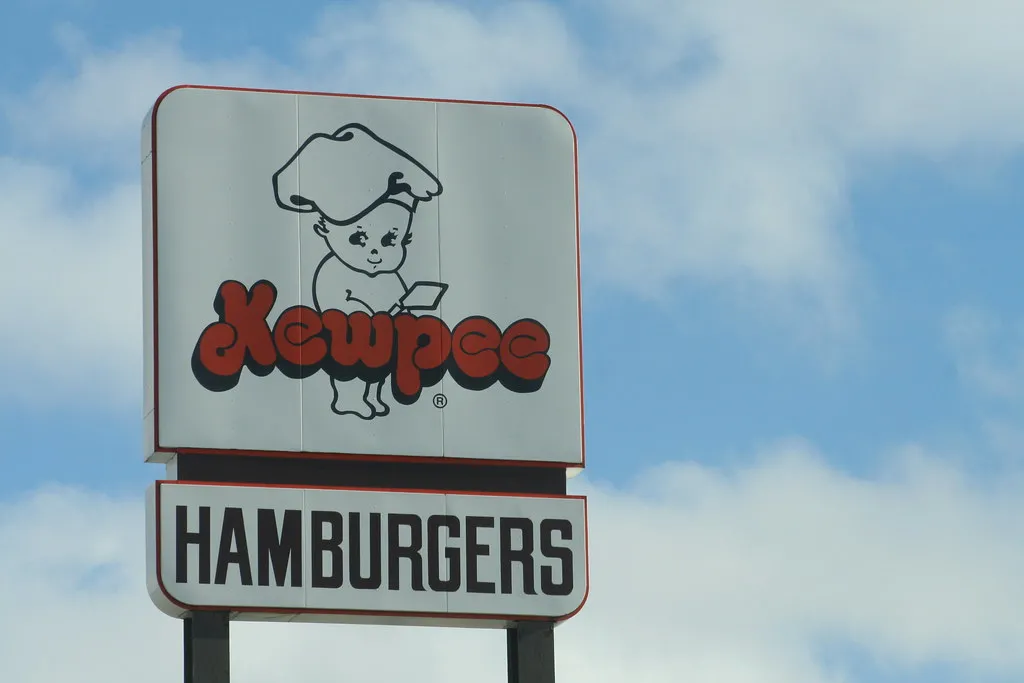
The Origins of Kewpee Hamburgers
The story of Kewpee Hamburgers begins in 1923 when it was founded in Lansing, Michigan. The chain was named after the Kewpie doll, a popular figure in early 20th-century American culture. Kewpee’s unique appeal lay in its focus on simple yet high-quality food. The original concept of Kewpee revolved around serving square hamburgers made from fresh, locally sourced beef, which set it apart from other fast-food joints at the time.
During the 1920s, Kewpee expanded rapidly, thanks in part to its innovative menu and efficient service model. While many restaurants offered basic, round hamburgers, Kewpee’s square patties were a novelty that quickly caught the public’s attention.
Kewpee’s Expansion and Popularity
By the 1930s and 1940s, Kewpee Hamburgers had become a regional sensation. With a growing number of locations, the chain was gaining ground in the highly competitive fast-food industry. It became known not only for its unique hamburgers but also for its customer service and attention to cleanliness—factors that were ahead of their time in the restaurant business.
World War II had a significant impact on the restaurant industry, including Kewpee. While many restaurants struggled due to food rationing and labor shortages, Kewpee managed to maintain its operations by emphasizing quality over quantity.
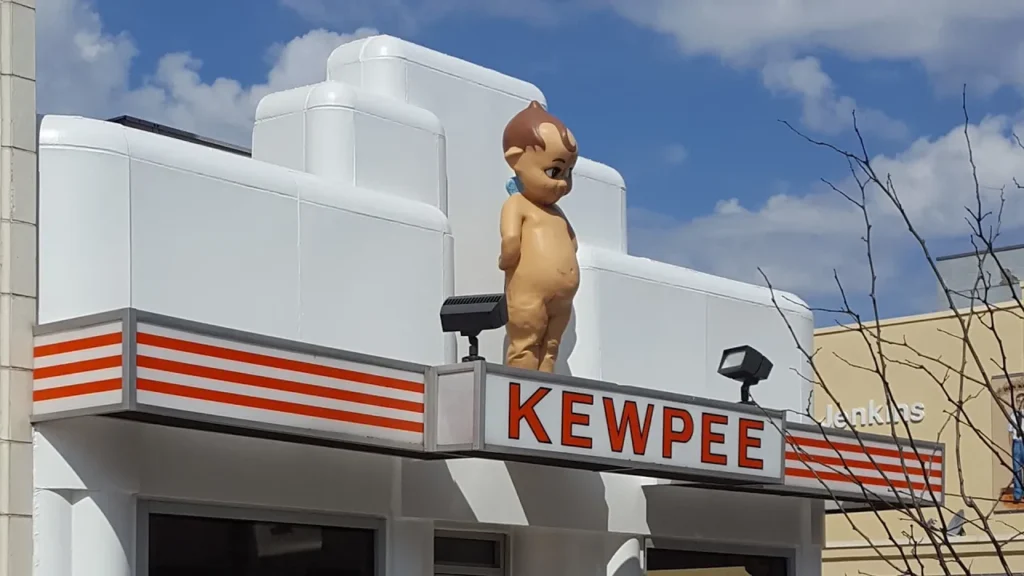
The Signature Features of Kewpee Hamburgers
One of the key elements that made Kewpee stand out was its focus on quality. Kewpee’s square burger, made with fresh ground beef, was not only visually distinctive but also represented a higher standard of food at a time when many competitors used frozen or lower-quality ingredients.
Additionally, Kewpee pioneered many of the practices that are now standard in the fast-food industry. Their emphasis on using fresh vegetables, locally sourced meat, and offering customizable burgers was ahead of its time. These practices contributed to their early success and customer loyalty.
The Role of Ray Croc and the Fast-Food Revolution
Ray Croc, the man who turned McDonald’s into the fast-food behemoth it is today, is often linked to Kewpee’s story. Some historians believe that Croc was inspired by Kewpee’s efficiency and quality-driven model. While Kewpee focused on quality over rapid expansion, McDonald’s took a different approach, opting for scale and standardization. This difference in strategy would later be a major factor in McDonald’s domination of the fast-food industry.
Kewpee’s Role in Shaping American Fast Food
While McDonald’s might have overshadowed Kewpee in size and scope, Kewpee’s influence on the broader fast-food industry cannot be denied. Many early fast-food chains borrowed elements of Kewpee’s business model, such as the drive-thru concept, which became a cornerstone of American fast-food culture.
Decline of Kewpee Hamburgers
By the 1960s and 1970s, Kewpee faced significant challenges. The fast-food industry had become increasingly competitive, and Kewpee struggled to keep pace with the rapid growth of chains like McDonald’s, Burger King, and Wendy’s, which was ironically founded by Dave Thomas, a former Kewpee employee. As these fast-food giants introduced standardized menus, aggressive marketing, and franchising strategies, Kewpee began to lose market share.
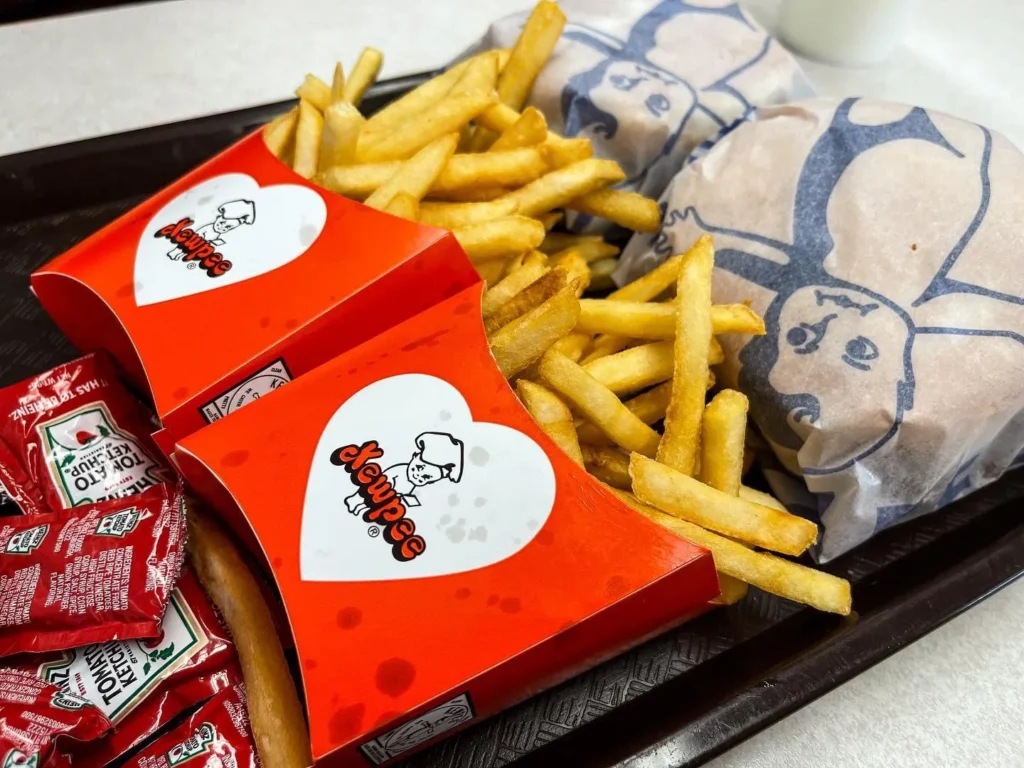
Failed Expansion Attempts
Kewpee’s management struggled to adapt to the changing landscape. While competitors embraced innovation and modernization, Kewpee’s menu and business practices remained relatively unchanged. Attempts to expand beyond its regional stronghold were largely unsuccessful, and the chain found itself lagging behind in terms of both brand recognition and customer base.
The Legacy of Kewpee Hamburgers
Despite its decline, Kewpee left a lasting legacy in American food culture. The chain’s commitment to quality and its role in pioneering fast-food practices are still remembered by food historians and loyal customers alike. For many, Kewpee represents a nostalgic reminder of a time when fast food was not synonymous with mass production and artificial ingredients.
Kewpee in Popular Culture
Kewpee Hamburgers has also made appearances in various films, TV shows, and pop culture references over the years, cementing its place in the collective memory of American diners. The iconic Kewpie doll, used as the brand’s mascot, remains a symbol of the chain’s quirky charm.
Attempts at Revival
In recent years, there have been several attempts to revive the Kewpee brand. These efforts have focused on leveraging nostalgia and emphasizing Kewpee’s historical significance. However, despite some localized success, Kewpee has struggled to regain its former glory in the fast-food market.
Kewpee’s Modern-Day Locations
Today, only a few Kewpee restaurants remain in operation, primarily in Ohio and Michigan. These locations continue to serve the classic square hamburgers, maintaining the same quality standards that defined the brand in its early days. While the chain may no longer be a major player in the industry, it has managed to retain a loyal following.

The Future of Kewpee Hamburgers
Looking ahead, Kewpee faces both challenges and opportunities. In an era where consumers are increasingly seeking out high-quality, locally sourced food, Kewpee’s original principles could serve as a foundation for a potential comeback. However, the fast-food market is more crowded than ever, and Kewpee would need to innovate and modernize in order to compete effectively.
Conclusion: Kewpee’s Impact on the Fast-Food Industry
Kewpee Hamburgers may not have grown to the same heights as McDonald’s or Wendy’s, but its influence on the fast-food industry is undeniable. From its square hamburgers and fresh ingredients to its pioneering role in developing the drive-thru concept, Kewpee helped lay the foundation for many of the practices that define the industry today.
While Kewpee ultimately declined due to its inability to adapt to changing market conditions, its story offers valuable lessons for modern businesses. By understanding the importance of innovation, adaptability, branding, and scalability, companies can position themselves for long-term success in competitive markets.
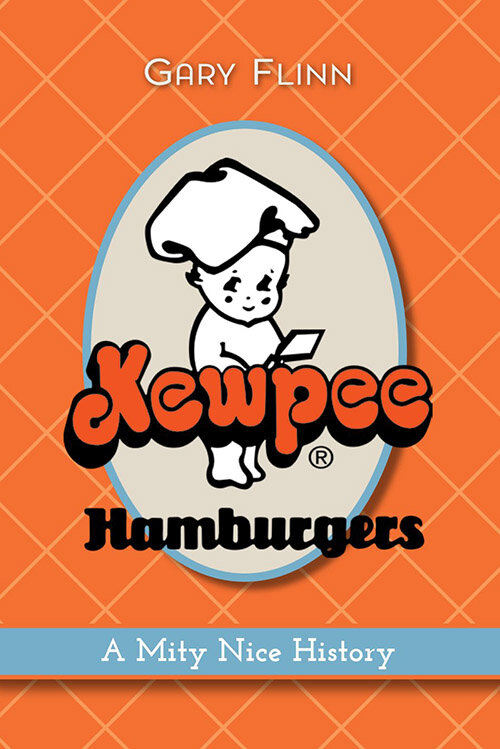
Even in its more limited capacity today, Kewpee’s legacy lives on through its dedicated fanbase, its remaining locations, and the influence it had on the fast-food giants that followed. For many, Kewpee represents a nostalgic reminder of a time when fast food was simpler and focused on quality, and its contributions to the industry will not be forgotten.

